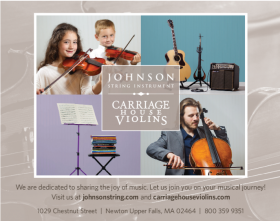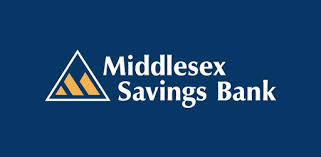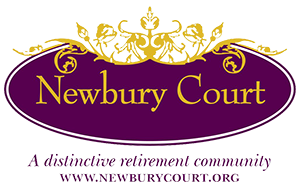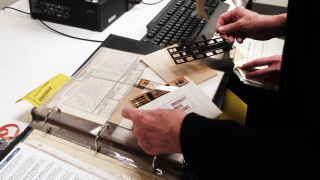 Back by popular demand, our Delving Deeper online series provides explorations of intriguing historical and musical topics. With Episode 5, Behind the Curtain: Mining, Polishing, and Showcasing Lost Musical Gems, we continue our long-standing commitment of uniting historical performance with historic architectural sites along the Old Post Road. In this online presentation-performance, Co-Artistic Directors Suzanne Stumpf and Daniel Ryan respond to our viewers' most frequently asked question: How does the ensemble find and revive overlooked musical treasures?
Back by popular demand, our Delving Deeper online series provides explorations of intriguing historical and musical topics. With Episode 5, Behind the Curtain: Mining, Polishing, and Showcasing Lost Musical Gems, we continue our long-standing commitment of uniting historical performance with historic architectural sites along the Old Post Road. In this online presentation-performance, Co-Artistic Directors Suzanne Stumpf and Daniel Ryan respond to our viewers' most frequently asked question: How does the ensemble find and revive overlooked musical treasures?
This behind-the-scenes tour of the research, reconstruction, and editing processes includes discussions about our legacy of championing unknown composers, how research has changed over the years, and an introduction to Joseph Bologne, Chevalier de Saint-Georges, the first known Classical composer of African descent. This journey of exploration culminates in a performance of a rediscovered quartet by the Chevalier de Saint-Georges in Worcester’s beautiful Salisbury Mansion, a stunning historical venue. In the film, viewers are also treated to a tour of the Mansion, one of the finest house museums in the country.
This project is supported, in part, by a grant from The Fletcher Foundation.

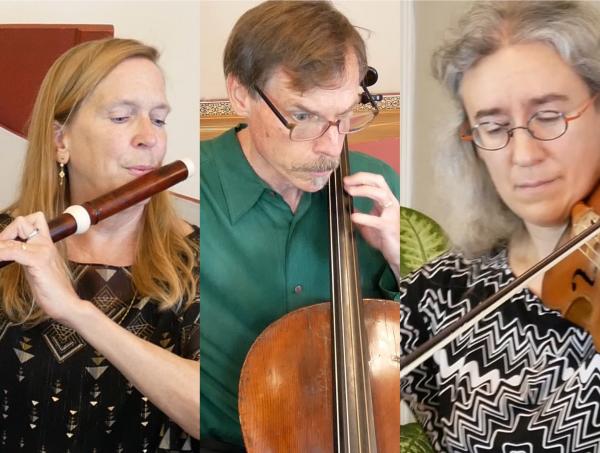
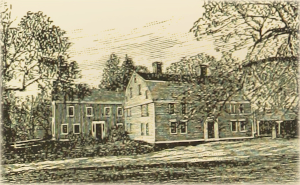 Musicians of the Old Post Road teams up with the Sudbury Historical Society to explore some of history-rich Sudbury’s most fascinating historical sites. Historical Society members offer brief talks at each location, providing a richer understanding of each site’s history and key personages in Sudbury’s past. The ensemble performs modern-day premieres of fascinating, rediscovered works by 18th-century Massachusetts composers and arrangers at each site, bringing this history to life!
Musicians of the Old Post Road teams up with the Sudbury Historical Society to explore some of history-rich Sudbury’s most fascinating historical sites. Historical Society members offer brief talks at each location, providing a richer understanding of each site’s history and key personages in Sudbury’s past. The ensemble performs modern-day premieres of fascinating, rediscovered works by 18th-century Massachusetts composers and arrangers at each site, bringing this history to life!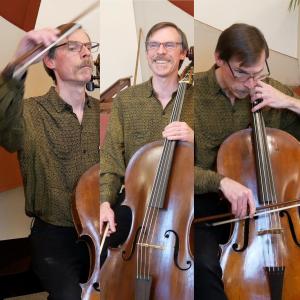 This presentation/performance explores the origins and early development of the cello. Unlike the violin and viola, the size of the cello was not standardized until the 1680's, much later that its smaller string counterparts. Throughout the Baroque era, there continued to be great variety in how the instrument was made and played, including the number of strings, their tuning, and how the cello and bow were held. The variety in structure of and approaches to the instrument is reflected in the fascinating early repertoire written for it. Music performed and discussed in this presentation includes some of the earliest works for the cello: a ricercata by Giovanni Battista Degli Antonii and a ricercar by Domenico Gabrielli, both of which use a tuning of the instrument where the top string is tuned to G, one tone lower than the customary A. That same "Italian" tuning was used by J. S. Bach in his Suite No. 5 in C Minor for solo cello which will be discussed and performed in its entirety.
This presentation/performance explores the origins and early development of the cello. Unlike the violin and viola, the size of the cello was not standardized until the 1680's, much later that its smaller string counterparts. Throughout the Baroque era, there continued to be great variety in how the instrument was made and played, including the number of strings, their tuning, and how the cello and bow were held. The variety in structure of and approaches to the instrument is reflected in the fascinating early repertoire written for it. Music performed and discussed in this presentation includes some of the earliest works for the cello: a ricercata by Giovanni Battista Degli Antonii and a ricercar by Domenico Gabrielli, both of which use a tuning of the instrument where the top string is tuned to G, one tone lower than the customary A. That same "Italian" tuning was used by J. S. Bach in his Suite No. 5 in C Minor for solo cello which will be discussed and performed in its entirety.




